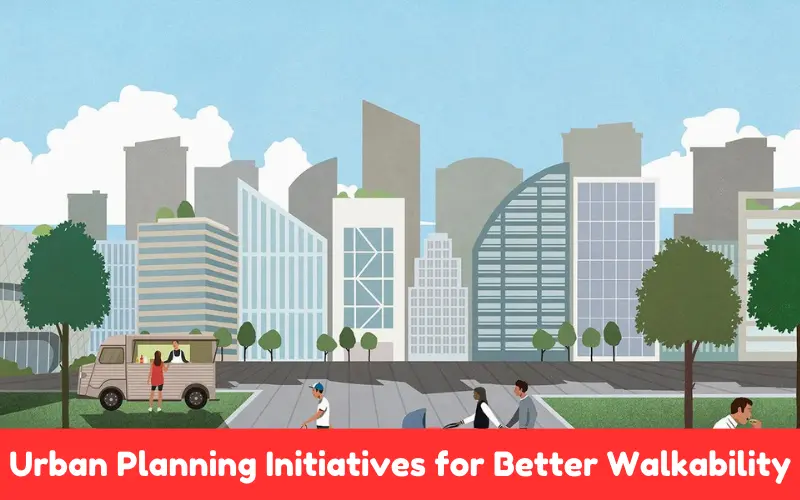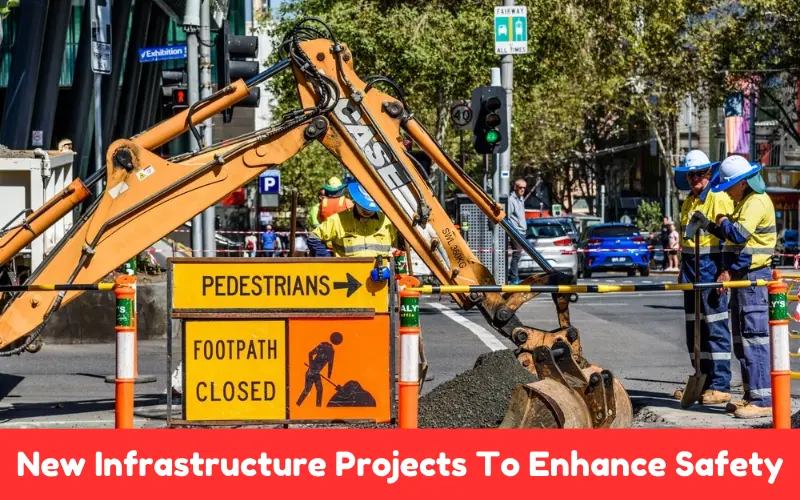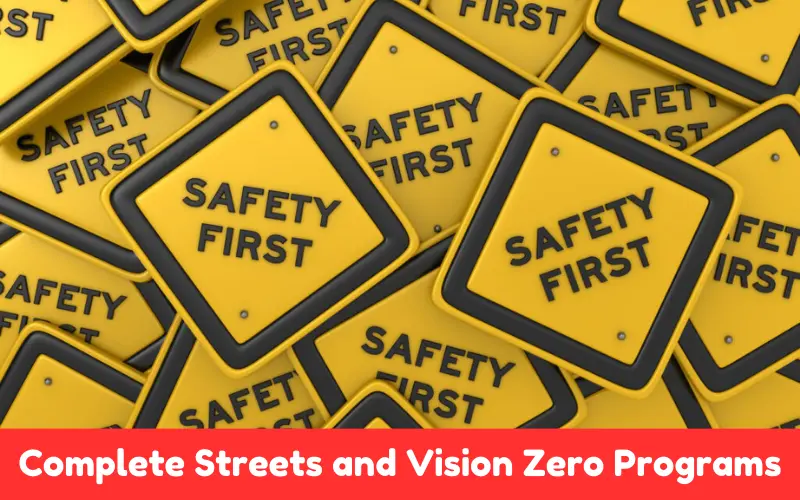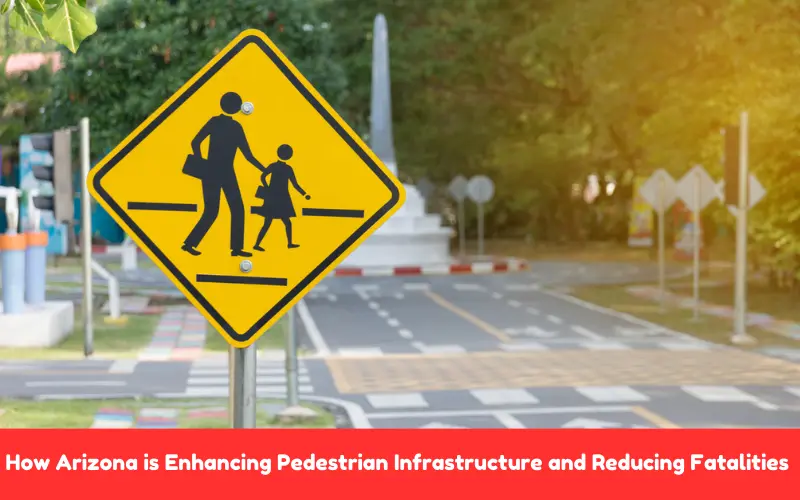In an era of urban sprawl and rapid population growth, how is Arizona working to make its two largest cities safer for its residents and create more walkable terrain?
By investing in projects focused on pedestrian and traffic safety, as well as sustainable urban planning, Arizona hopes to decrease accidents and improve walkability.
From smart traffic signals to increased public transit and open spaces, here’s how Arizona is enhancing pedestrian safety infrastructure and reducing fatalities. Take a look.
Article Summary
- Current Walkability and Traffic Issues in Arizona
- Urban Planning Initiatives for Better Walkability
- Enhancing Pedestrian Safety Awareness Campaigns
- New Infrastructure Projects To Enhance Safety
- Smart Traffic Systems Technology for Pedestrian Safety
- Public Transportation Expansion and Its Role in Walkability
- Complete Streets and Vision Zero Programs
- Future Projects- Green Spaces and Urban Trails
Current Walkability and Traffic Issues in Arizona
Arizona is among the states with the greatest hurdles to walkability and pedestrian safety. In 2022, there were 307 pedestrian fatalities in the state, an increase of 18.1 percent from 2021.
Arizona is one of the most dangerous states for pedestrians and the only one in the top five deadliest states for pedestrians that don’t border the Great Lakes.
The pedestrian fatality rate in Arizona is 4.17 per 100,000 people (only New Mexico had a higher rate).
Arizona is frequently cited for its high pedestrian fatalities, urban sprawl, traffic volumes and the high proportion of drivers who don’t have pedestrian infrastructure.
In addition to pedestrian safety problems, traffic congestion persists in many big cities, such as Phoenix, where the average driver spends 62 hours annually stuck in traffic.
This has the effect of choking the air with vehicle emissions and increasing the chances of pedestrian accidents.
Urban Planning Initiatives for Better Walkability
Modern day urban planning, now prioritizing the pedestrian, is beginning to reshape walkability in Arizona.
One such effort is the implementation of Complete Streets policies that require the design of roadways with consideration for all road users, such as Arizona’s Land Development Code, which encourages ‘complete streets in new developments’.
Phoenix’s Transportation 2050 plan allocates $31.5 billion towards improving pedestrian infrastructure with wider sidewalks and safer crossings.

Mixed use developments are also promoted in cities such as Tempe to inculcate walking behavior and decrease traffic: living, shopping, and recreation areas are brought closer together, enhancing foot traffic and creating safe environments, especially downtown areas.
Enhancing Pedestrian Safety Awareness Campaigns
In Arizona, pedestrian safety awareness campaigns like ‘See Me AZ’ promote drivers and pedestrians to be more aware by encouraging visibility.
This initiative encourages both parties to view each other on the road and to utilise crosswalks and zones for drivers to be more aware. Arizona still leads the nation in pedestrian deaths.
Suppose a driver hits a pedestrian in Arizona. In that case, the driver who struck the pedestrian must stop and remain with the injured as long as necessary to render assistance or contact emergency responders.
The pedestrian should try to get medical attention and report the accident, preferably with treatment or law enforcement, and collect witness statements or photos (hopefully with an attorney who specialises in pedestrians who have been struck, take the help of a pedestrian accident lawyer).
Provide these steps by calendar date. That’s what a safety campaign might do.
New Infrastructure Projects To Enhance Safety
For its part, Arizona is funding projects to enhance the walking environment. For instance, the Grand Canalscape project in Phoenix is improving pedestrian amenities by adding bridges and walkways to the canal itself.
Elevated crosswalks and pedestrian islands are being constructed in high traffic areas such as Tempe, where accidents are common.

Flagstaff’s Lone Tree Overpass, slated to be complete by 2026, will create a pedestrian and bicycle path that is physically separated from the traffic speed.
These initiatives are critical for the state, which saw 1,307 traffic fatalities in 2023, the second highest total since Arizona began collecting records.
Smart Traffic Systems Technology for Pedestrian Safety
Smart traffic systems being used in the state of Arizona are working to make public spaces safer for pedestrians and decrease accidents.
In Phoenix and Scottsdale, towns in the state, adaptive traffic signals are being installed to reduce the delay that can increase the risk of a collision between vehicles and pedestrians.
Phoenix has also begun to install sensors for pedestrian detection at intersections so that crossing times can be lengthened to reflect real time usage.
Vehicle to vehicle and pedestrian technology are part of a broader set of recommendations to address safety system with real time data and moving connected systems.
Public Transportation Expansion and Its Role in Walkability
Building up public transport is an important part of Arizona’s plan to make walking safer. In 2015, the 28 mile (45km) Valley Metro light rail system was marked to expand to 50 miles by 2050.
Walking around places near transit is encouraged, adding walkability to the area and helping to take traffic pressure off the roads.
Tucson and Tempe also look to bus rapid transit (BRT) for efficient, faster transportation. Public transport networks will enhance urban walkability, eliminating vehicle travel and increasing pedestrian movement.
Complete Streets and Vision Zero Programs
When Arizona adopted Complete to provide safer streets, those cities protected bike lanes from traffic related injuries.

In Tempe and several other cities, Vision Zero, as it is now known, is being used to embrace this end. Initial results are promising: in the two years following Tempe’s vision, serious pedestrian injuries decreased by 20%.
Future Projects- Green Spaces and Urban Trails
Arizona is also investing in greenways and walkability initiatives to minimise walk times. For instance, the Rio Salado Restoration project in Phoenix involves restoring banks, creating walking paths, and pedestrian bridges. It also increases walkability by providing shaded and safe areas from heat and the urban heat islands.
Flagstaff’s Urban Trails System (FUTS) will grow from 58 to 80 miles by 2030, linking residential areas to parks and business districts so that walkers and bike riders do not need to confront vehicle traffic directly.
Conclusion
How might public walkability and pedestrian safety evolve in Arizona as projects shape? With continued spending toward smart traffic systems, public transport and green infrastructure, Arizona is positioning itself to build more livable and safer urban places.
Those increase pedestrian safety, but help create a high quality of life across the state.

